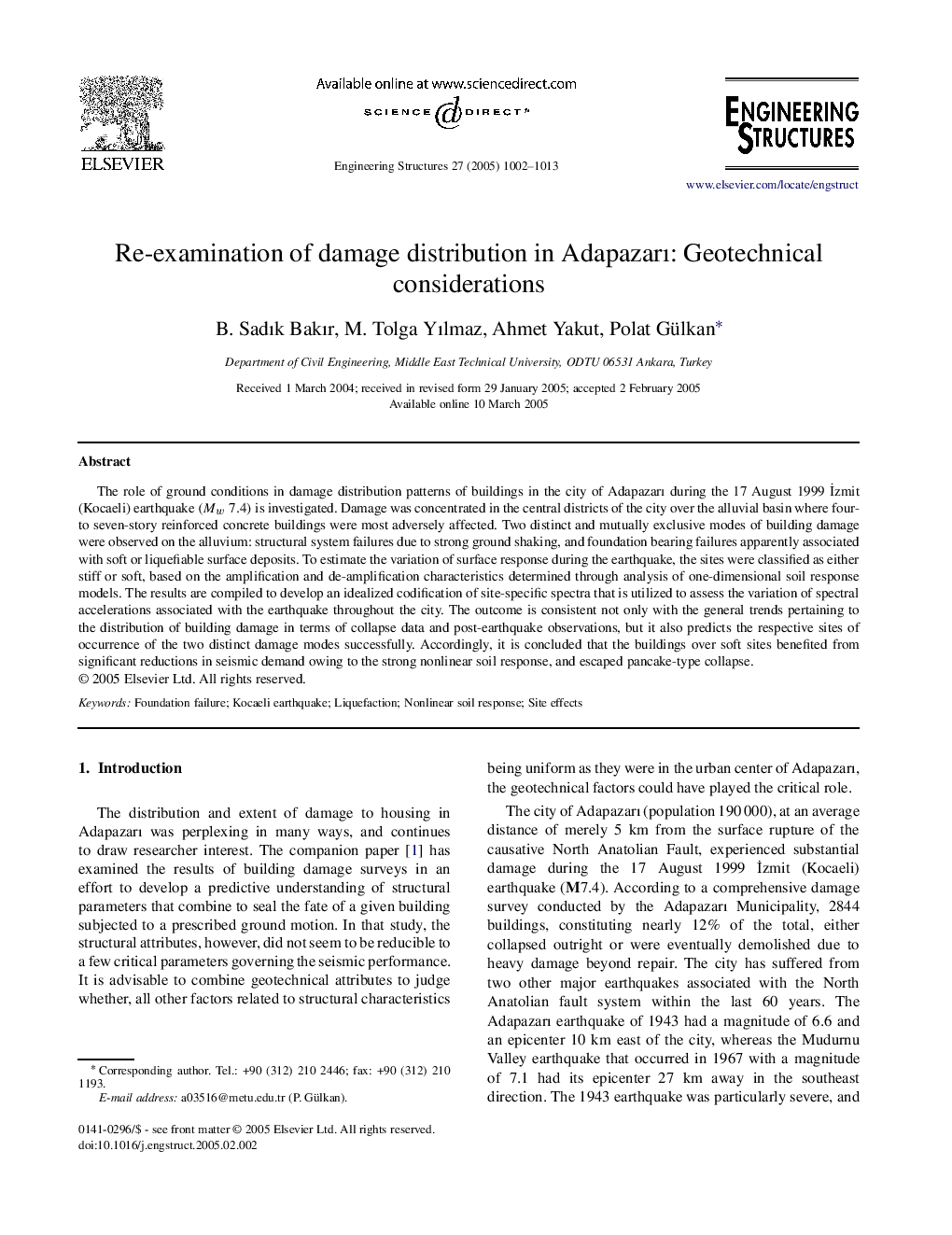| Article ID | Journal | Published Year | Pages | File Type |
|---|---|---|---|---|
| 10287109 | Engineering Structures | 2005 | 12 Pages |
Abstract
The role of ground conditions in damage distribution patterns of buildings in the city of Adapazarı during the 17 August 1999 İzmit (Kocaeli) earthquake (Mw7.4) is investigated. Damage was concentrated in the central districts of the city over the alluvial basin where four- to seven-story reinforced concrete buildings were most adversely affected. Two distinct and mutually exclusive modes of building damage were observed on the alluvium: structural system failures due to strong ground shaking, and foundation bearing failures apparently associated with soft or liquefiable surface deposits. To estimate the variation of surface response during the earthquake, the sites were classified as either stiff or soft, based on the amplification and de-amplification characteristics determined through analysis of one-dimensional soil response models. The results are compiled to develop an idealized codification of site-specific spectra that is utilized to assess the variation of spectral accelerations associated with the earthquake throughout the city. The outcome is consistent not only with the general trends pertaining to the distribution of building damage in terms of collapse data and post-earthquake observations, but it also predicts the respective sites of occurrence of the two distinct damage modes successfully. Accordingly, it is concluded that the buildings over soft sites benefited from significant reductions in seismic demand owing to the strong nonlinear soil response, and escaped pancake-type collapse.
Related Topics
Physical Sciences and Engineering
Earth and Planetary Sciences
Geotechnical Engineering and Engineering Geology
Authors
B. Sadık Bakır, M. Tolga Yılmaz, Ahmet Yakut, Polat Gülkan,
